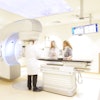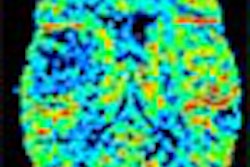A decade’s worth of investigational use indicates that post-lumpectomy brachytherapy is an effective alternative to external beam radiation therapy (EBRT) for preventing the recurrence of breast cancer.
"It compares very favorably with conventional therapy," said Dr. Robert Kuske, a leading investigator in breast brachytherapy who summarized the findings of several trials in a presentation earlier this year at the 2002 National Interdisciplinary Breast Center Conference in Las Vegas.
Kuske, a radiation oncologist and now a professor at the University of Wisconsin Medical School in Milwaukee, initiated a revisiting of the long-dormant concept of breast brachytherapy in the early 1990s, while practicing at the Ochsner Clinic in New Orleans. His interest was piqued by a patient -- an executive at a Venezuelan oil company -- who sought a breast-conserving treatment without the six weeks of treatment time required with EBRT.
The short duration required for effective treatment with breast brachytherapy -- just five days -- is an important therapeutic advantage, said Kuske, who now performs the procedure routinely. For patients, he summarizes the difference between the catheter-dependent brachytherapy and EBRT as "one week with a lot of poking or six weeks with no poking." Eight out of 10 women choose the brachytherapy, he said.
Other advantages of brachytherapy include the very localized treatment compared to EBRT, which delivers significantly greater radiation to the whole breast, along with the ribs, lungs, skin, and heart, and the better cosmetic results achieved with brachytherapy.
In addition to its invasiveness, brachytherapy is contraindicated for some patients, including those with potential early-stage cancers in more than one quadrant of the breast.
But for effectiveness, breast brachytherapy appears to match EBRT in the studies conducted to date.
Kuske and colleagues from the Ochsner Clinic reported that only one patient out of 50 treated with brachytherapy, and followed up for a median of more than six years, had a recurrence of cancer in the breast. Patient outcomes were also analyzed against those from retrospectively matched patients who underwent EBRT after lumpectomy. Kuske and his co-authors found the two groups were similar in grade III treatment toxicities, local and regional recurrence rates, and cosmetic results (American Journal of Surgery, Vol. 180:4, pp. 299-304).
Researchers from William Beaumont Hospital in Royal Oak, MI, also published results from 174 brachytherapy patients followed for a median of three years along with matched controls treated with EBRT. The researchers found no statistically significant differences in rates of ipsilateral or locoregional treatment failure between the groups, nor in the rates of distant metastasis or survival (Journal of Clinical Oncology, April 1, 2001, Vol.19:7, pp. 1993-2001).
The RTOG 95-17 trial -- a multicenter study of breast brachytherapy sponsored by the American College of Radiology’s Radiation Therapy Oncology Group -- found that the selected patients treated with breast brachytherapy between 1995 and 2000 fared well despite forgoing whole-breast radiation.
The RTOG is now considering a phase III head-to-head comparison trial of breast brachytherapy versus EBRT.
In the meantime, Kuske is planning to continue other work he started in New Orleans: training others to do breast brachytherapy. He would like to see other physicians obtain training before taking on the procedure, given what could result -- tumor recurrence from failing to cover the target volume, pneumothorax or infection from the catheter insertion, or skin damage from the radiation.
"It’s a very skill-dependent procedure," Kuske said. "I don’t want patients to be the victim of someone’s learning curve when they could come and learn from me."
There appears to be unmet demand for an alternative to EBRT. Kuske noted that half of the patients who come to see him are from outside Wisconsin.
Interestingly, although breast brachytherapy is still an emerging option for patients, it is far from a new concept. According to Kuske, the first attempt at breast brachytherapy was made in 1898, just two years after Marie Curie first discovered radium. However, the therapeutic possibilities were largely ignored for decades after that because of the prevailing medical opinion in favor of radical mastectomy.
By Tracie L. Thompson
AuntMinnie.com contributing writer
April 12, 2002
Related Reading
Radiation during surgery may aid breast cancer care, March 22, 2002
Breast conserving therapy rates may depend on access, November 6, 2001
Use of breast-conserving cancer therapy varies significantly by surgeon, November 27, 2000
Early breast cancer treated suboptimally is prone to recurrence, October 31, 2000
Copyright © 2002 AuntMinnie.com



















